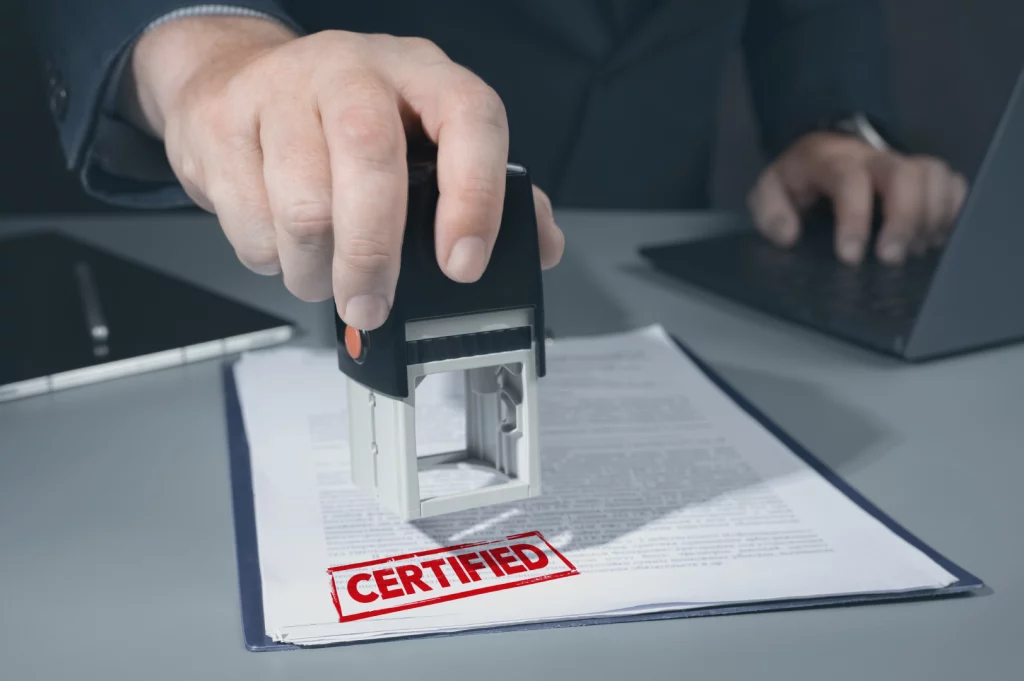If you are serious about legally cutting ties with a country you were a citizen of, there is one piece of paper that matters above all else: your renunciation certificate.
Think of this document as your official receipt. It’s the government’s way of saying, “Okay, it’s done. You are no longer a citizen.” Without it, you’re in a tricky spot. That old country might still think you belong to them, which can mean big problems like unwanted tax bills or other legal duties.
Getting this renunciation certificate is the final, crucial step in a big life decision.
What This Certificate Actually Is
So, what is a renunciation certificate? It is your legal proof of exit. It is not something you can just print online. It is a formal document issued by a government agency after you jump through all their hoops: filling out forms, paying fees, and often having an interview.
Remember, just because your passport expired doesn’t mean you’re off the hook. Citizenship is a legal status, and only a formal renunciation process, ending with that renunciation certificate, truly ends it. This document protects you down the road.

Why Would You Go Through This?
People don’t make this decision lightly. Usually, there’s a strong reason.
- New Country, New Rules: This is the most common reason. Countries like India or Singapore usually don’t allow dual citizenship. So, if you want to become a full citizen there, you must first prove you’ve left your old citizenship behind. That proof is your renunciation certificate.
- Tax Headaches: For some, especially Americans living overseas, the requirement to file U.S. taxes forever can be too much. Renouncing citizenship can stop this. But you’ll need that renunciation certificate to show the IRS.
- A Fresh Start: Sometimes, it’s a personal choice for a cleaner break.
The Step-by-Step Reality Check
Getting your renunciation certificate is a marathon, not a sprint. Here’s what you can generally expect.
- Stop and Think. This is the most important part. Be 100% sure. This decision is almost always permanent. Make sure you have another citizenship already, or you could become stateless, a very serious situation.
- The Paper Chase. Get ready to gather documents. You’ll likely need:
- The official application form.
- Your original birth certificate.
- Your current and old passports.
- Proof of your new citizenship.
- Some passport photos.
- Pay the Fee. This is often an unpleasant surprise. The cost to renounce citizenship can be very high, sometimes thousands of dollars. Be prepared.
- The Chat. Many countries require a final interview. An official will sit down with you to confirm you are doing this willingly and that you understand what it means.
- The Wait. Then, you wait. Processing can take many months, even over a year. Finally, you will receive your renunciation certificate. Guard this document. It is difficult to replace.
Things That Can Go Wrong
It’s not always smooth sailing. Be ready for a few bumps.
- The Cost: The fee alone can be a major barrier.
- Mistakes on Forms: A small error can cause big delays. Check everything twice.
- Tax Compliance (for Americans): If you’re giving up U.S. citizenship, you must be completely caught up on your U.S. tax filings for the past five years. The IRS must give you a clearance certificate first.

Life After with Your Certificate
Once you have your renunciation certificate, your life changes. You can’t use that old passport for travel. But you will need the certificate for practical things.
You might need to show it to the tax office in your former country to close your file. If you still have a bank account there, the bank will want to see it. This renunciation certificate is the key that locks the door behind you.
Conclusion:
Ultimately, obtaining your renunciation certificate is the final, non-negotiable step in a life-altering decision. It is the one document that provides closure, legally sealing your choice and protecting you from future obligations.
While the journey to get it can be long and complex, the certificate itself brings a clear and definitive end, allowing you to move forward with certainty and focus entirely on the future you have chosen.
Frequently Asked Questions
What’s the difference between renouncing and relinquishing?
Renouncing is something you actively apply for. Relinquishing is usually automatic when you do something else, like join a foreign army.
How long does the whole process take?
Be patient. It can take anywhere from half a year to almost two years.
Can I change my mind and get my citizenship back?
Almost never. You must treat this as a permanent, final decision.
What happens if I lose my certificate?
This is a big problem. It is very hard to get a replacement. Make copies and keep the original somewhere extremely safe.
Should I hire a lawyer?
It’s a very good idea. The process is complex and the stakes are high. A lawyer can help you avoid costly mistakes.
Can my application be rejected?
Yes. If they think you don’t understand the consequences, aren’t tax compliant, or are being forced, they can say no.
Does this affect my kids’ citizenship?
Generally, no. Your decision only affects you.
Do I have to go back to that country to do this?
Usually, no. You can normally do everything at that country’s embassy where you live now.
Why is it so expensive?
Governments say it covers the cost of processing and storing the records. It can also be a way to discourage people from doing it.
Is this certificate the only proof I need?
Yes. It is the main legal document that proves you are no longer a citizen.

